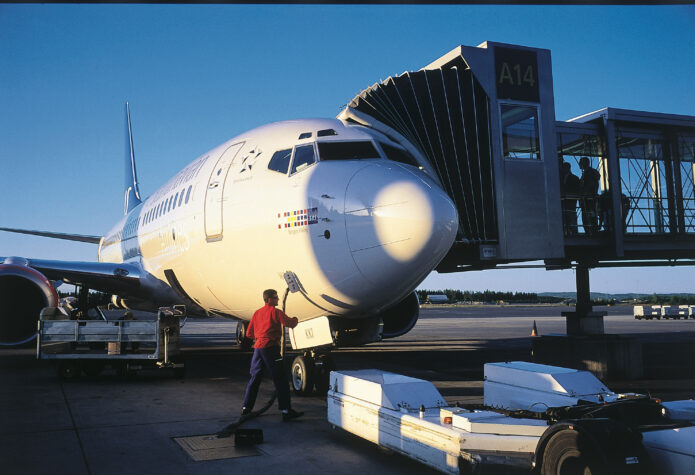Expanding Oslo Airport

Arriving at Oslo Airport, one is welcomed by big signs proudly stating that expansion is underway. The construction activity is visible in both the arrival and departure halls. NIB is financing the expansion project with a NOK 1.5 billion (EUR 195 million) loan—its biggest loan to Norway ever.
“An airport is a constant construction site,” says Nic Nilsen, CEO of Oslo Airport, as he leans over a big table covered in architectural plans for the airport’s development in his office.
The new terminal, which NIB is taking part in financing, is expected to be operational by 2017 and meet an ever growing number of air passengers at Norway’s main airport.
“We expect about 8% growth this year, and a total of 21 million passengers,” Mr Nilsen, says, explaining the need for more space.
With 23 million passengers expected to travel to and from the airport in 2012, the current terminal is already running over capacity.
“Oslo airport is 150,000 square metres and we have 21 million passengers this year. In comparison, Sweden’s main airport, Arlanda, is 450,000 square metres and has had about 19 million passengers in the same period,” Mr Nilsen explains, adding that the reason for this is the high rate of domestic flights in Norway, totalling 45% of all flights at Oslo Airport.
“With so many domestic flights, it is fair to say that this expansion project is an important national project,” he says.
Increased competitiveness
To NIB, the loan is at the core of the competitiveness pillar of the Bank’s mandate to strengthen member countries’ competitiveness.
Ragne Hjalmang, senior adviser at Avinor—which operates the Norwegian airport network and is the borrower of the NIB loan—agrees with Mr Nilsen that the expansion is important to Norway.
“Living in a long, stretched-out country with many small, local communities we are used to and dependent on flying for travelling. Often there is no real alternative mode of transport,” Ms Hjalmang says.
She adds that the direct flight between Oslo and Norway’s next largest city, Bergen, is one of Europe’s most frequently travelled routes.
Long-term loan
Ms Hjalmang and Mr Nilsen both say that the NIB loan of NOK 1.5 billion, also serves as a quality stamp and a confirmation that the project is a sound one.
“Financially, we receive a long-term loan at a reasonable interest rate and a long payment-free period. It is also an advantage to have NIB behind us when we are in negotiation with other banks,” Ms Hjalmang adds.
The environment is the other pillar of NIB’s mandate, and it is not the first thing that comes to mind when discussing aviation. However, Oslo Airport has ambitions for greener air transport.
“Our goal is increased traffic without any increase in CO2 emissions. This can mainly be achieved by upgrading to new planes. The expanded terminal is expected to be 50% more energy efficient than the current building,” Mr Nilsen says.
Today, 65% of all the passengers flying to or from Oslo Airport use public transport to reach or leave the airport.
“The Airport Express Train and the national railways have plans to increase capacity and frequency in accordance with increased air travellers. After the expansion, the train station will be placed right in the heart of the airport, and we wish to continue to maintain good share of passengers using public transport to and from the airport,” Mr Nilsen concludes.
